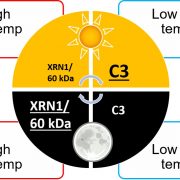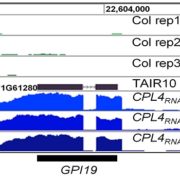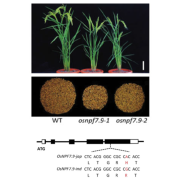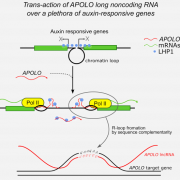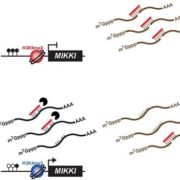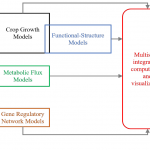Transient genome-wide interactions of the master transcription factor NLP7 initiate a rapid nitrogen-response cascade (Nature Comms.)
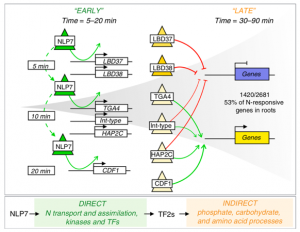 Transcription factors (TFs) and their genome-wide targets form gene regulatory networks that allow organisms to respond to stimuli. However, conventional biochemical assays only identify a subset of the TF-target interactions. In this paper, Alvarez et al. elucidate the genetic network of NIN-LIKE PROTEIN 7 (NLP7), which is a master regulator of plant nitrogen signaling. Both stable and transient NLP7 targets were identified by induction of NLP7 nuclear import coupled with time-series chromatin immunoprecipitation (ChIP-seq) and the use of a fusion to DNA adenine methyltransferase to mark transient interactions by DNA methylation. More than half (270/492) of the identified NLP7-target interactions are highly transient but changes in transcription continue even after NLP7 disassociates. These highly transient interactions are typically overlooked but crucial for early nitrogen response. The findings of this paper support the Hit-and-Run transcription model previously described by this group, in which transient interaction of a TF with its target sequence leads to long-term transcriptional changes. Moreover, the approaches to detect transient TF-target interactions on a genome-wide scale are applicable for other organisms. (Summary by Yun-Ting Kao) Nature Comms. 10.1038/s41467-020-14979-6
Transcription factors (TFs) and their genome-wide targets form gene regulatory networks that allow organisms to respond to stimuli. However, conventional biochemical assays only identify a subset of the TF-target interactions. In this paper, Alvarez et al. elucidate the genetic network of NIN-LIKE PROTEIN 7 (NLP7), which is a master regulator of plant nitrogen signaling. Both stable and transient NLP7 targets were identified by induction of NLP7 nuclear import coupled with time-series chromatin immunoprecipitation (ChIP-seq) and the use of a fusion to DNA adenine methyltransferase to mark transient interactions by DNA methylation. More than half (270/492) of the identified NLP7-target interactions are highly transient but changes in transcription continue even after NLP7 disassociates. These highly transient interactions are typically overlooked but crucial for early nitrogen response. The findings of this paper support the Hit-and-Run transcription model previously described by this group, in which transient interaction of a TF with its target sequence leads to long-term transcriptional changes. Moreover, the approaches to detect transient TF-target interactions on a genome-wide scale are applicable for other organisms. (Summary by Yun-Ting Kao) Nature Comms. 10.1038/s41467-020-14979-6
[altmetric doi=”10.1038/s41467-020-14979-6″ details=”right” float=”right”]


